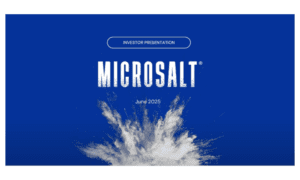Here are the consumer forces driving the low sodium market into the billions of dollars.
Key Takeaways
- High levels of sodium have been linked to hypertension, weight gain, and cardiovascular diseases
- About 70% of millennials prefer to snack than have regular meals
- Almost 50% of adults reported snacking more regularly during the pandemic
- Most U.S. consumers support government efforts to reduce sodium in restaurant meals, processed foods, and school meals
- The low-sodium snack market was valued at roughly $1.6 billion in 2020
- The low-sodium industry is on pace for a whopping $3.55 billion by 2027
The global value of the low-sodium market was valued at roughly $1.6 billion in 2020. Now a recent report has found that the industry is set for a whopping $3.55 billion by 2027, a 12.1% annual growth rate. Let’s break down the consumer forces driving the low-sodium market into billions of dollars.
Sodium is essential for the proper functioning of the human body. It maintains a balance of water and minerals in the cells and is also essential for conducting nerve impulses. Low levels of sodium (hyponatremia) will cause symptoms such as muscle cramps, weakness, nausea, vomiting, headaches, seizures, and even coma.
Even with all that goodness, sodium consumption should still be kept in check. High levels of sodium have been linked to hypertension, weight gain, and cardiovascular diseases. At the same time, a reduction in dietary sodium intake is associated with decreased blood pressure and the incidence of hypertension as well as a reduction in cardiovascular-related morbidities and mortalities. The CDC has issued sodium-reduction guidelines to reduce the risks of sodium-related complications.
According to the 2020-2025 Dietary Guidelines for Americans, adults should consume a maximum of 2,300mg of sodium per day. The World Health Organization (WHO) recommends 2,0000 mg as the upper limit for daily sodium intake.
Low sodium snacks are gaining popularity
According to a recent Mondelēz survey, about 70% of millennials prefer to snack than have regular meals. The same survey showed that almost 50% of adults reported snacking more regularly during the pandemic, possibly because they were spending more time at home. Along with this trend, there has also been a spike in the demand for healthier snacking options including low sodium snacks.
Two studies that were published by the CDC showed that a majority of U.S. consumers support government efforts to reduce sodium in restaurant meals, processed foods, and school meals.
- 90% of Americans support government efforts to lower sodium content in school meals.
- 81% of Americans support government efforts to limit sodium content in restaurants.
- 56% of Americans support government efforts to limit sodium in processed foods.
It is clear that Americans are ditching super salted snacks and opting instead for low-sodium options that are heart-healthy. Low-sodium foods and snacks should offer a maximum of 140mg of sodium per serving.
Consumer forces driving the low-sodium market
A recent Market Insight Report 2021-2027 has highlighted several important factors in the low-sodium snack market. The main objective of the report was to define the market size and forecast its value in the next eight years while analyzing both qualitative and quantitative aspects of the market. Sales channels incorporated in the report included hyper and supermarkets, food specialty stores, convenience stores, and online.
Product types included in the report were:
- Sweet potato chips
- Olive oil popcorn
- Granola bars
- Roasted sweet and salty chickpeas
- Baked beet chips
- Zucchini chips
The major market players included in the report were:
- General Mills Inc.
- Tyson Foods Inc.
- Nestle
- Mondelez International
- Select Harvests Limited
- B&G Foods
- PepsiCo
- Kind
- Hormel Foods Corporation
- Hain Celestial
There are several consumer factors combining to both drive and limit this growth.
1. Rising cases of hypertension globally
It is estimated that about 26% of adults worldwide suffer from hypertension, which is defined as blood pressure that exceeds 140/90. The prevalence of hypertension is expected to rise even further as the burden of disease shifts from communicable diseases to chronic lifestyle diseases.
Diet is strongly linked to hypertension, especially salt intake. Consumers are now aware of the risks of hypertension and are making every effort to minimize their sodium consumption.
2. Increased availability of low-sodium products
Food producers are offering a wider variety of low-sodium snacks to meet the unique needs of consumers. These products are readily available from supermarkets, convenience stores, and even online. This has made it easy for consumers to switch to low-sodium options. A good example is SaltMe ® potato chips. These crispy chips have 50% less sodium but retain their full flavor courtesy of MicroSalt® patented technology.
3. Increased health awareness
The market size of health-conscious consumers is growing exponentially, and the trend has caught up with the low-sodium market. The government has also played a significant role in educating the public about healthy food choices. In 2020, the CDC issued Dietary Guidelines for Americans for 2020 to 2025 that recommend reducing sodium intake to a maximum of 2,300mg per day.
4. The high cost of low-sodium snacks
The report also highlighted the high cost of most of the low-sodium snacks that are currently on the market. This can discourage consumers from seeking healthier snacking options on a budget. While it is more expensive to bring low-sodium snacks to market, food manufacturers need to strike a balance that caters to their bottom line as well as consumer budgets. The government should also incentivize food producers by offering tax relief for low-sodium snacks.
MicroSalt® strikes a fine balance
MicroSalt® offers micro-sized salt-like particles that offer double the flavor of salt but at the same time have 50% less sodium. This is the secret ingredient in SaltMe®! full-flavor, low-sodium potato chips. MicroSalt helps food producers offer full-flavor, low-sodium snack options without having to break the bank.
Our team strives to create a new food industry norm where good health doesn’t come second to great taste. MicroSalt® is the proud global winner of the P&G Alumni Network’s 2021 Star Entrepreneur Award. We’d love to help make your product the best it can be. Simply contact us via our message page, connect with one of our international offices, or call 1 877 825 0655 to learn more.




